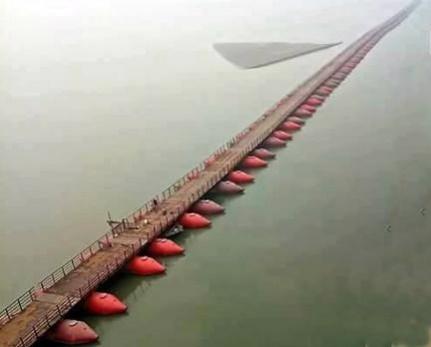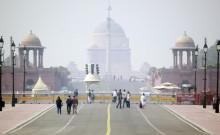
The Ganga River, a lifeline for millions in Bihar, is witnessing a significant decrease in its water level. This alarming trend has been observed over the last four years, with the average water level in Bhagalpur dropping from 27 meters to 24.50 meters by 2024. This decline is not an isolated incident but is part of a broader pattern affecting several rivers in Bihar, including the Ghagra, Kamla Balan, Falgu, Durgavati, Kosi, Gandak, and Burhi Gandak.
The Water Resources Department's survey reveals a constant decrease in the water level, raising concerns about the future of these rivers and the communities that depend on them. The Ganga River, in particular, is in danger due to the construction work being carried out over it. Many bridges are being built over the Ganga River, and construction work is continuously going on along its banks. This construction activity is seen as a significant threat to the river's health and sustainability.
Guddu Baba, who initiated a program called Ganga Bachao Abhiyan, has been vocal about the dangers posed by these construction activities. He points out that the marine drive has also been constructed on the banks of the Ganga River in Patna, and other constructions are going on unabated along its banks.

The Impact of Construction on River Health
He warns that the condition of other rivers in the state is also very bad because the silt in the rivers is continuously increasing. The Ganga River, he notes, flows with 736 metric tonnes of silt annually, a figure that underscores the scale of the problem.
The issue of siltation and the decreasing water level in the Ganga River has caught the attention of Bihar's Chief Minister, Nitish Kumar. He has repeatedly asked the Modi government to help the state in clearing the silt in the Ganga River. With Nitish Kumar's support to the NDA government, it is expected that the silt issue and other projects will get top priority from the Central government.
However, the problem is not just limited to the Ganga River or Bihar. Across India, many rivers are experiencing similar issues due to rapid urbanization and infrastructure development. For instance, the Gaula River, one of the many small rivers that form the veins of the Ganga basin, is being hollowed out by mining for concrete.
The Need for Sustainable Development
As the country moves towards urbanization, the demand for riverbed material for construction activities has exploded, leading to extensive mining activities that disrupt the river's natural flow and ecology.
In Goa, the Atal Setu Bridge was constructed over the Mandovi River to tackle traffic-related issues. However, the construction of such infrastructure on riverbeds often leads to environmental concerns. In Uttarakhand, the town of Joshimath is sinking due to tectonic activity exacerbated by rapid urbanization. The town sits on the tectonic fault line of Vaikrita Thrust, and two other faultlines fall close to it, increasing the risk of land subsidence.
The situation calls for a delicate balance between development and environmental conservation. While infrastructure development is crucial for economic growth and urbanization, it should not come at the cost of the environment. The rivers, the lifelines of our communities, need to be protected and preserved.
In conclusion, the decreasing water level in the Ganga River and other rivers in Bihar is a pressing issue that needs immediate attention. The construction activities on and along the riverbanks are posing a significant threat to these rivers. It is crucial to strike a balance between infrastructure development and environmental conservation to ensure the sustainability of these rivers. The government's role is pivotal in this regard, and it is hoped that with the right policies and actions, the health of these rivers can be restored. This is not just a local issue but a national concern that requires a concerted effort from all stakeholders to ensure the preservation of our precious water resources.

















